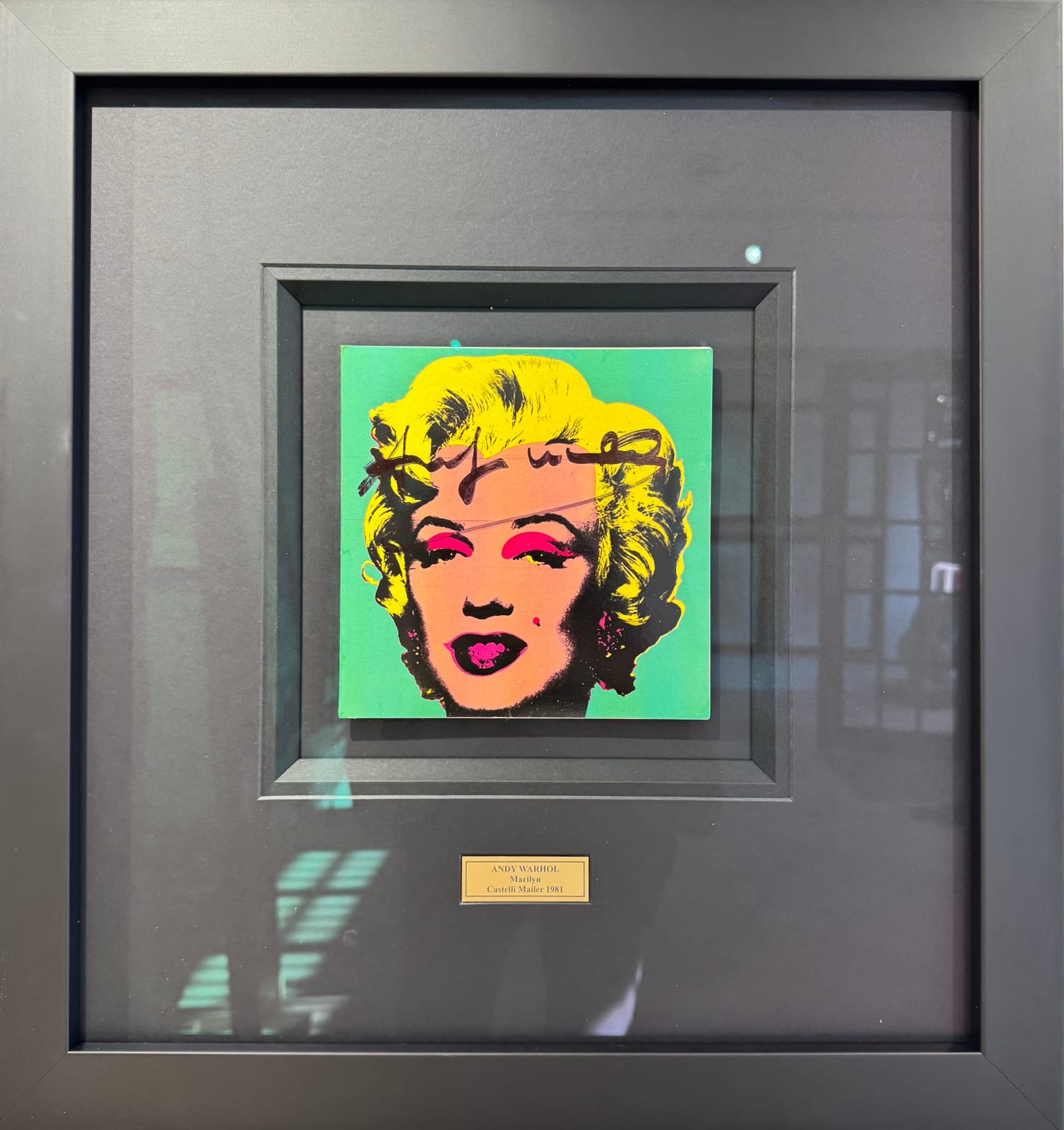Andy Warhol
Printed by Castelli Graphics
Signed in black marker
Framed – 99% UV Glass
17.8 x 17.8 cm
The present artwork was produced for the exhibition "Andy Warhol: A Print Retrospective," held at the Leo Castelli Gallery in New York in 1981. The Leo Castelli Gallery in New York holds a significant place in the history of contemporary art. Established in 1957 by art dealer Leo Castelli, the gallery quickly became a leading force in the contemporary art world. Castelli's keen eye for talent and innovative approach to art dealing transformed the gallery into a launchpad for numerous influential artists. The gallery was instrumental in the rise of the Pop Art movement with Castelli among the first to recognize and promote the works of Pop Art pioneers such as Andy Warhol, Roy Lichtenstein, and Claes Oldenburg. This support played a crucial role in bringing Pop Art into the mainstream. Castelli's exhibitions often introduced ground-breaking works and concepts to the public. His ability to curate shows that captured the zeitgeist helped shape the trajectory of contemporary art.
The present piece is part of a series created using fourteen distinct colour combinations, which Warhol began in 1967 with the present coloured piece being one of the most sought-after editions. The series began after the actress Marilyn Monroe's tragic death in 1962, leading Warhol to use a publicity still from her 1953 film, Niagara, as the basis for these works. Warhol produced numerous versions of this image, experimenting with various colour schemes.
Warhol's fascination with Monroe's image is evident in his prolific output, with over 20 paintings of her created by the end of 1962 alone. Notable pieces include a series of 20-inch square canvases and a monumental 6-foot by 9-foot painting displayed at the Ferus Gallery in Los Angeles in the fall of 1962. These works, both "Marilyn Diptych" and "Gold Marilyn Monroe," are considered some of his most iconic pieces. Warhol continued to explore the Marilyn motif in various media, including silkscreen prints, well into the 1970s.
Warhol's approach to art was characterized by a lack of consistent themes, often blending elements of popular culture with his unique vision. His use of silkscreen printing allowed him to produce multiple versions of the same image, creating a sense of mass production that mirrored contemporary consumer culture. This technique also highlighted Warhol's interest in the intersection of art and commercialism.
In an interview from 1963, Warhol explained his initial foray into the Marilyn series: "I started doing silkscreens. I wanted something stronger that gave more of an assembly line effect. With silk-screening, you pick a photograph, blow it up, transfer it in glue onto silk, and then roll ink across it so the ink goes through the silk but not through the glue. That way you get the same image, slightly different each time. It all started because I wanted to see how many different images I could make of the same thing."
This experimentation with repetition and variation became a hallmark of Warhol's work, cementing his status as a pioneer of modern art. His "Marilyn" series remains a testament to his innovative spirit and enduring influence.



